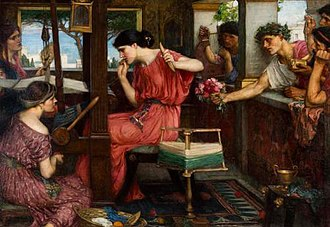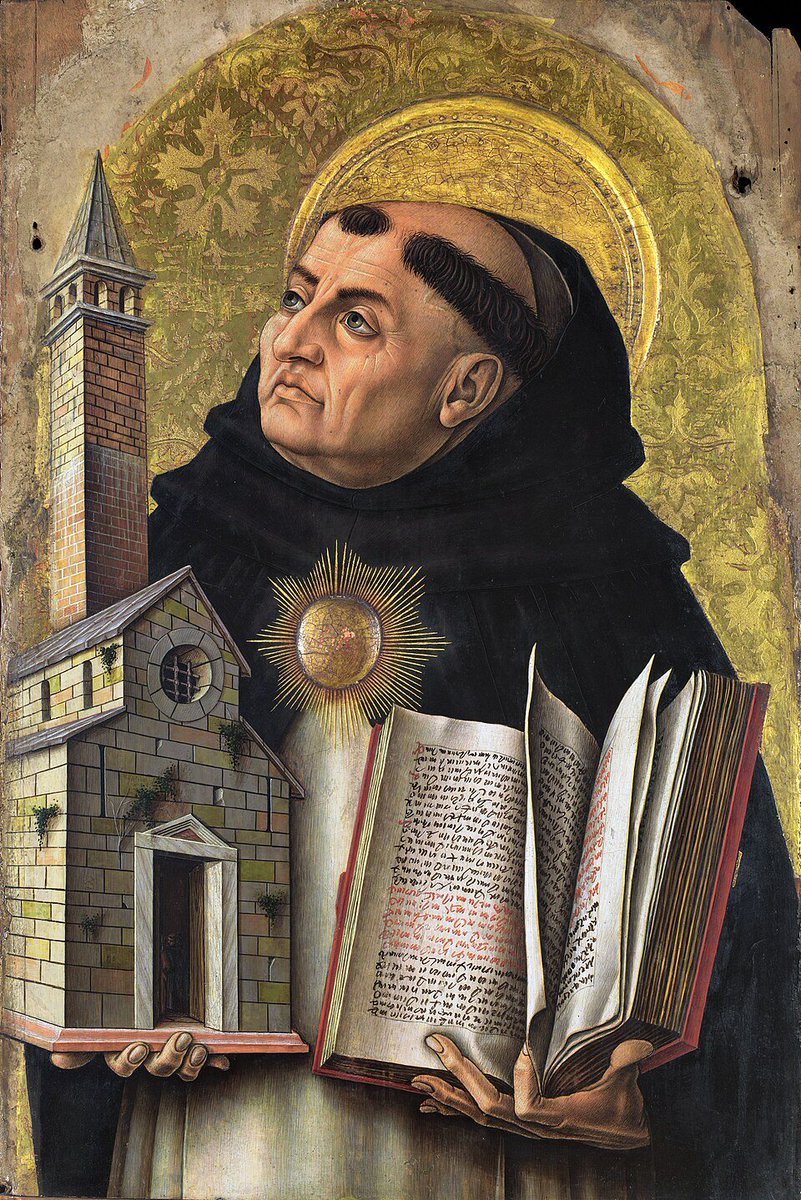Homer's "Odyssey" challenges traditional views on heroism and the pursuit of home.
The epic poem has inspired artists throughout history. Here are 17 artworks you should be familiar with.
The epic poem has inspired artists throughout history. Here are 17 artworks you should be familiar with.

1. "Circe Offering the Cup to Ulysses" by John William Waterhouse
This artwork portrays the encounter between Odysseus and Circe, the enchantress who turns his men into swine. Odysseus, protected by the herb moly given by Hermes, resists her magic.
This artwork portrays the encounter between Odysseus and Circe, the enchantress who turns his men into swine. Odysseus, protected by the herb moly given by Hermes, resists her magic.

2. "Teiresias foretells the Future to Odysseus" by Henry Fuseli (1780-1785)
Following Circe's advice, Odysseus and his crew visit Hades to consult Tiresias, who warns them of Poseidon's vengeance and advises against disturbing the Sun god's cattle, before Odysseus converses with the spirits of the deceased, including family and legendary heroes, and then resumes his journey to Ithaca.
Following Circe's advice, Odysseus and his crew visit Hades to consult Tiresias, who warns them of Poseidon's vengeance and advises against disturbing the Sun god's cattle, before Odysseus converses with the spirits of the deceased, including family and legendary heroes, and then resumes his journey to Ithaca.

3. "The Siren Vase" attributed to the Siren Painter, (480-470 BC)
Odysseus and his crew navigate past the Sirens by blocking their ears with wax and binding Odysseus to the mast, allowing him to hear the Sirens' irresistible songs without succumbing to their deadly lure.
Odysseus and his crew navigate past the Sirens by blocking their ears with wax and binding Odysseus to the mast, allowing him to hear the Sirens' irresistible songs without succumbing to their deadly lure.

4. "Between Scylla and Charybdis" by Henry Fuseli (1794-1796)
Facing the choice between Scylla and Charybdis, Odysseus was advised to pass by Scylla and lose only a few sailors, rather than risk the loss of his entire ship in the whirlpool.
Facing the choice between Scylla and Charybdis, Odysseus was advised to pass by Scylla and lose only a few sailors, rather than risk the loss of his entire ship in the whirlpool.

5. Odysseus Overcome by Demodocus' Song, by Francesco Hayez (1813–15)
Odysseus is weeping at the court of Alcinous as the blind minstrel Demodocus sings about Odysseus and Achilles at Troy while playing the harp.
Odysseus is weeping at the court of Alcinous as the blind minstrel Demodocus sings about Odysseus and Achilles at Troy while playing the harp.

6. "Ulysses Deriding Polyphemus" by Joseph Mallord William Turner (1829)
Turner's painting focuses on the escape of Odysseus and his men from Polyphemus's cave, emphasizing the themes of human intellect over brute force.
Turner's painting focuses on the escape of Odysseus and his men from Polyphemus's cave, emphasizing the themes of human intellect over brute force.

7. "Odysseus and Polyphemus" by Arnold Böcklin (1896) - Odysseus and his men escape from Polyphemus's cave by clinging to the undersides of rams, and despite Odysseus's taunting, which provokes the giant to hurl mountain pieces, they safely flee back to their ships, unaware of the consequences of their actions.

8. The Blinding of Polyphemus"
This episode, where Odysseus blinds the Cyclops Polyphemus to escape captivity, has been depicted in ancient Greek pottery and Roman mosaics and recreated into sculptures.
This episode, where Odysseus blinds the Cyclops Polyphemus to escape captivity, has been depicted in ancient Greek pottery and Roman mosaics and recreated into sculptures.

9. "Penelope Unraveling Her Work at Night" by Dora Wheeler (1886) – Inspired by the story of Penelope, who unwove her tapestry each night to delay having to choose a suitor, this work highlights her fidelity and cunning. 

10. "Calypso Receiving Telemachus and Mentor" by William Hamilton (1791)
This artwork illustrates the episode where Telemachus, Odysseus's son, visits Calypso’s island, guided by Athena in the guise of Mentor, highlighting the theme of guidance and divine intervention.
This artwork illustrates the episode where Telemachus, Odysseus's son, visits Calypso’s island, guided by Athena in the guise of Mentor, highlighting the theme of guidance and divine intervention.

11. "Calypso’s Island, Departure of Ulysses", or "Farewell to Calypso" by Samuel Palmer (1848-49)
Calypso, a nymph and Titan's daughter, held Odysseus captive for seven years on her island, offering him immortality for marriage, but upon Zeus's command, she reluctantly freed him, assisting in his raft's construction, while warning of future hardships.
Calypso, a nymph and Titan's daughter, held Odysseus captive for seven years on her island, offering him immortality for marriage, but upon Zeus's command, she reluctantly freed him, assisting in his raft's construction, while warning of future hardships.

12. "Land of the Lotus Eaters" by Robert S. Duncanson (1861) - After enduring a severe storm, Odysseus and his Greek crew arrive at the land of the Lotus-eaters, a place where the inhabitants consume a Lotus flower. This flower has a captivating effect, ensnaring Odysseus's men by making them forget their desire to return home.

13. "The Return of Ulysses" by Pinturicchio (1508)
This Renaissance fresco depicts the moment of Odysseus's return to Ithaca and his reunion with Penelope, encapsulating the themes of perseverance and the fulfillment of destiny.
This Renaissance fresco depicts the moment of Odysseus's return to Ithaca and his reunion with Penelope, encapsulating the themes of perseverance and the fulfillment of destiny.

14. Penelope and the Suitors by John William Waterhouse
Odysseus discovers Penelope has devised tricks to delay the suitors whilst he has been away.
Odysseus discovers Penelope has devised tricks to delay the suitors whilst he has been away.

15. "Penelope questions Odysseus to prove his identity" by Johann Heinrich Wilhelm Tischbein
The painting captures a tense moment from Homer's epic, as Penelope interrogates Odysseus, who has returned in disguise after twenty years of war and wanderlust.
The painting captures a tense moment from Homer's epic, as Penelope interrogates Odysseus, who has returned in disguise after twenty years of war and wanderlust.

16. "The Trial of the Bow" by N.C. Wyeth (1929)
Under Athena's guidance, Penelope hosts an archery contest where the victor must shoot an arrow through twelve axe-heads; Odysseus alone succeeds, reveals his identity, and, with Telemachus, slaughters the suitors.
Under Athena's guidance, Penelope hosts an archery contest where the victor must shoot an arrow through twelve axe-heads; Odysseus alone succeeds, reveals his identity, and, with Telemachus, slaughters the suitors.

17. Odysseus and Penelope Reunited by Newell Convers Wyeth (1929) - "The Odyssey" concludes with Odysseus's triumphant return to Ithaca, the elimination of the suitors, and a reunion with his wife Penelope, who, convinced of his identity, embraces and kisses him. 

• • •
Missing some Tweet in this thread? You can try to
force a refresh






















